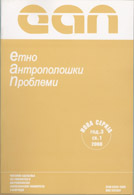O Crvenkapi, Dureksu i ljutnji: proizvodnja, značenje i recepcija jedne bajke i jedne reklamne poruke
About the Little Red Riding Hood, Durex and anger: production, meaning and reception of one fairy tale and one commercial ad
Author(s): Dragana AntonijevićSubject(s): Semiotics / Semiology, Customs / Folklore, Media studies, Semantics, Marketing / Advertising
Published by: Филозофски факултет, Универзитет у Београду
Keywords: semiological analysis; commercial; fairy tale;Little Red Riding hood; fake folklore; communication noise;
Summary/Abstract: By applying the semiological analysis, this paper considers planned and unplanned readings of a provocative domestic commercial, which, in order to convey its message, transposed the Little Red Riding Hood’s character in accordance with the advertised product – Durex condoms. This commercial caused furious reactions of parents who took legal action for breaching the Law on public advertising and, especially, "harming children’s sensibility and integrity". Provocative billboards also caused numerous comments in the daily newspapers, in the Internet chat rooms, with some considering the commercial vulgar and offensive and others having no problem with it, adding that the ones who took offence belonged to those puritan and conservative layers of the society. In order to discover the reasons to this kind of reactions, I started with researching how the commercial was made and what kind of message it offered. Next, I reconsidered the meaning of the very fairy tale "The Red Riding Hood". Its original version, which contains open sexual allusions, is quite different to the changed versions offered by Charles Perrault and the Grimm brothers. Their versions can be seen as fakelore, since they outrageously intervened on the plot and the meaning of the original fairy tale. However, since the Grimm brothers’ version is the most popular, it is a fact that our public reacted with such anger led by the meaning of their version, which accentuates overeating and cannibalism, and not sexual development of girls, which is the basic message of the original version. This is where the "communicational noise" that led to those negative reactions came from. By discovering the true meaning of the tale, the answer is given to the question whether the advertising agency made a slip up, or it had actually found the right way to communicate the hidden message of the tale, and at the same time ruin the advertising campaign for which it was used. In the end, range and possibilities of the social semiological analysis of commercials are considered.
Journal: Етноантрополошки проблеми
- Issue Year: 3/2008
- Issue No: 1
- Page Range: 11-38
- Page Count: 28
- Language: Serbian

